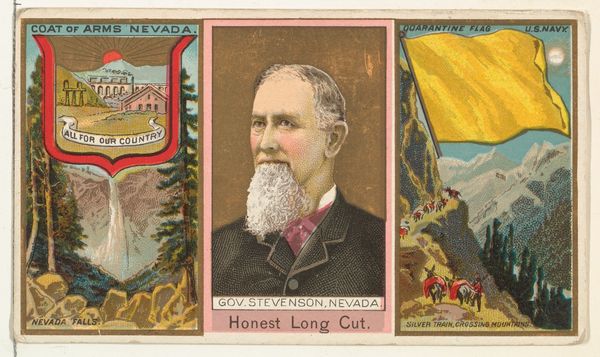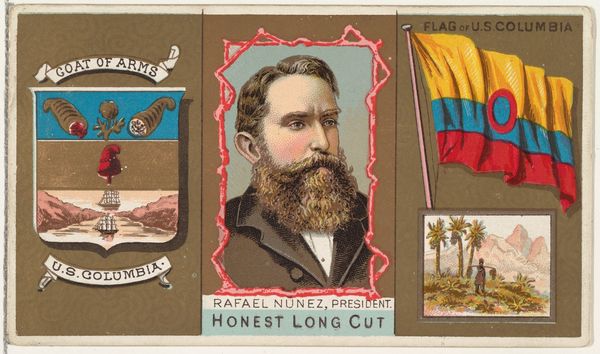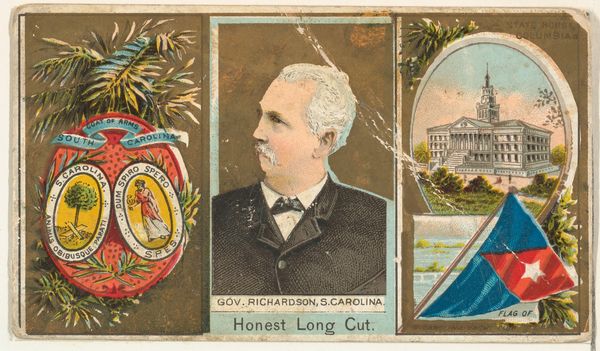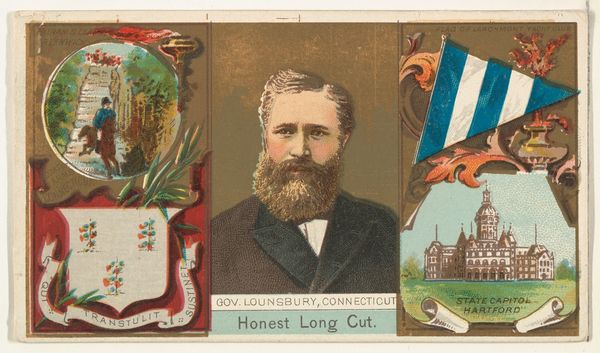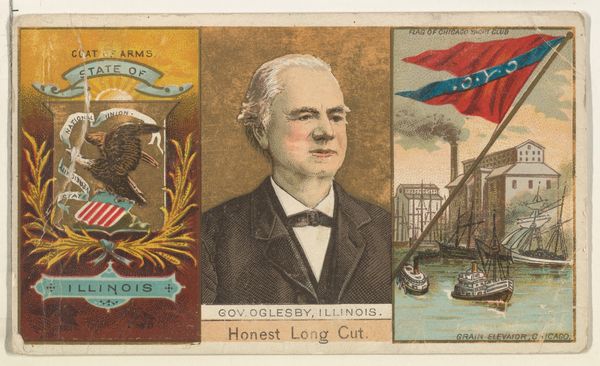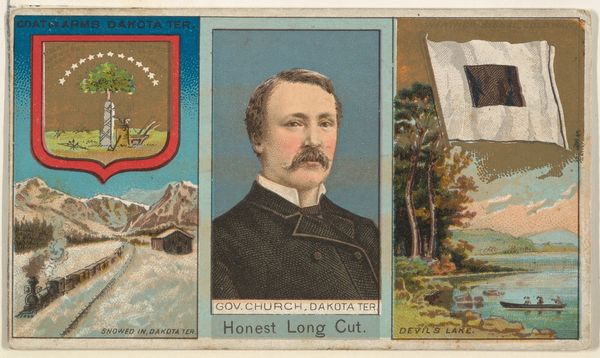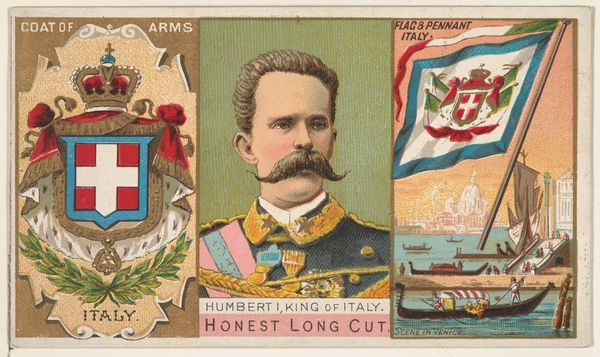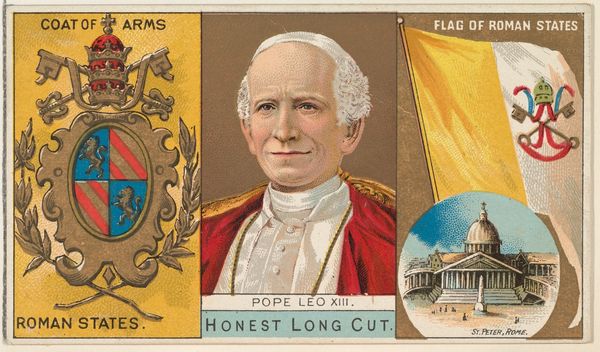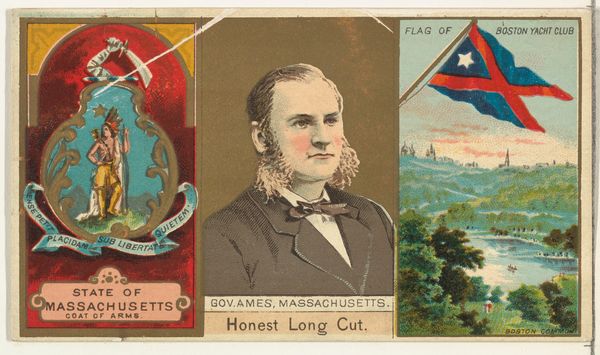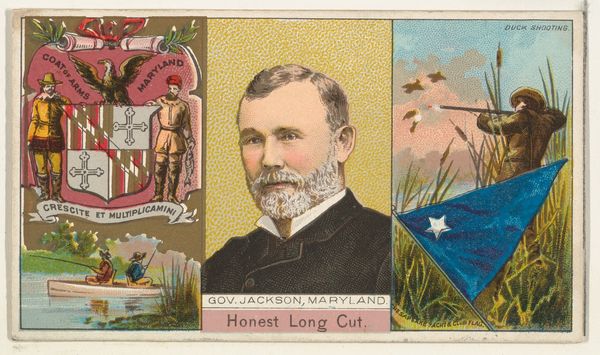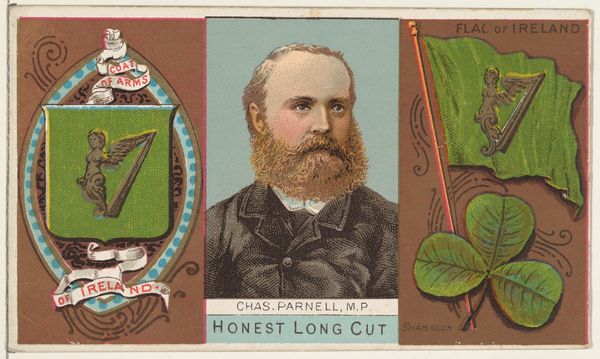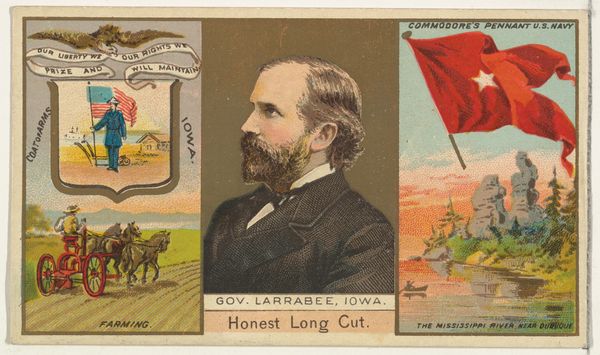
Duke of Argyle, Scotland, from the Rulers, Flags, and Coats of Arms series (N126-1) issued by W. Duke, Sons & Co. 1888
0:00
0:00
drawing, lithograph, print
#
portrait
#
drawing
#
lithograph
# print
#
caricature
Dimensions: Sheet: 2 1/2 × 4 5/16 in. (6.4 × 11 cm)
Copyright: Public Domain
Editor: This is "Duke of Argyle, Scotland," a lithograph print from 1888 by W. Duke, Sons & Co. It's part of their "Rulers, Flags, and Coats of Arms" series. It feels very… curated, almost like a collector's item even back then. What story does it tell you? Curator: Well, seeing this within the context of late 19th-century advertising reveals a fascinating interplay between commerce, patriotism, and social hierarchy. These cards were inserted into cigarette packs, primarily targeting a working-class male demographic. The inclusion of the Duke and Scottish heraldry elevated the product, associating it with status and tradition. What do you think this says about the role of visual culture at the time? Editor: So, it’s using the Duke's prestige to sell cigarettes. Is it about aspirational marketing, even back then? It's also interesting that it includes a coat of arms and a flag - how does that affect the card’s meaning? Curator: Precisely! The coat of arms and flag serve as visual cues, linking the product and consumer to notions of national pride and historical legacy. The Duke becomes a symbol of Scotland, indirectly endorsing the "Honest Long Cut" tobacco. It’s all deeply embedded in the social and political landscape of the time. What's especially striking to me is how this relatively inexpensive print attempted to bridge the gap between social classes through imagery. What message would you say this type of imagery transmits today, divorced from its original intent? Editor: I see what you mean. It makes me think about how brands still use celebrity endorsements and symbols of power, just in different ways now. Maybe less overt, but still there. Now I look at it and think less of the Duke and more about the mechanisms behind advertising! Curator: Exactly! Analyzing how such images circulated and were consumed provides invaluable insights into the social dynamics and power structures of the past, informing our understanding of the present. This tiny piece really embodies huge societal trends!
Comments
No comments
Be the first to comment and join the conversation on the ultimate creative platform.
